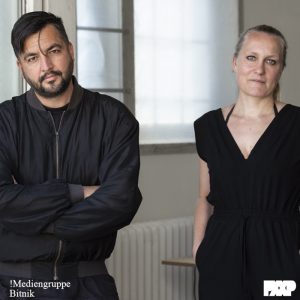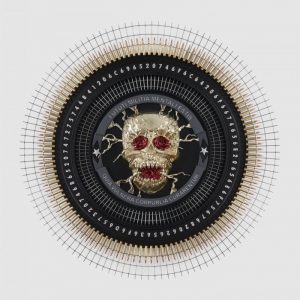Oh great! A mere 30 seconds after i had finished painfully and belatedly writing down my notes from the presentation that !Mediengruppe Bitnik gave at The Influencers festival in Barcelona in October, i found out that the video of their talk is ready for you to enjoy ‘from the comfort of your own home’ on vimeo. There:
!Mediengruppe Bitnik at The Influencers 2015 (part 1 of 2)
!Mediengruppe Bitnik at The Influencers 2015 (part 2 of 2)
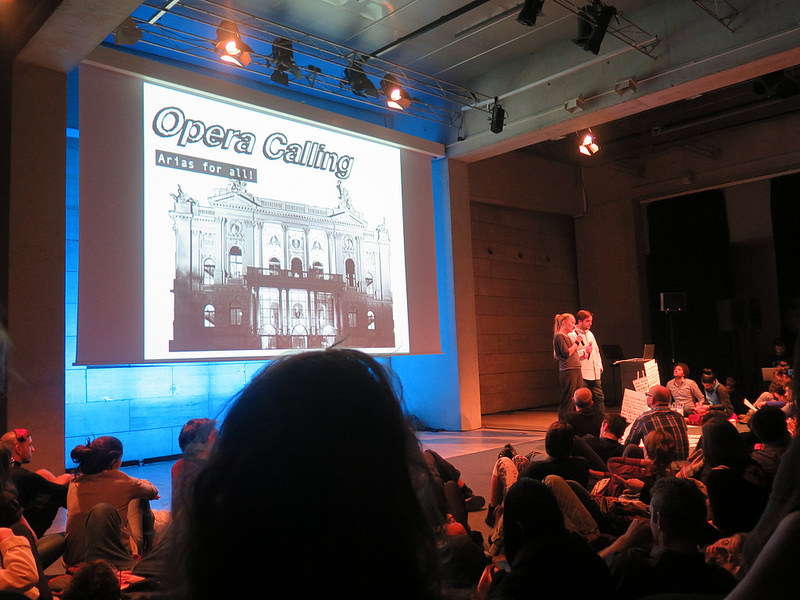
!Mediengruppe Bitnik speaking at The Influencers festival
So yes, !Mediengruppe Bitnik! Love these guys. I didn’t realize how much at first. I knew several of their works. The parcel for Assange, the architectural bug at HeK in Basel, the bot that shops on the darknet. I just didn’t realize these works were from the same 2 people. Oh the shame!
And although i thought i knew these works, it was good to hear the artists talk about them, giving some insights about their motivations, the little stories behind the controversies, the lessons they’ve learnt in the process, etc.
!Mediengruppe Bitnik are Carmen Weisskopf and Domagoj Smoljo, a duo of contemporary artists who work with public spaces, especially the online one and the way it affects the physical world.
So if you prefer to read a text than watch the videos above or if would like to have the links to their works on hand, then my notes might be handy after all:
!Mediengruppe Bitnik, Opera Calling, 2007
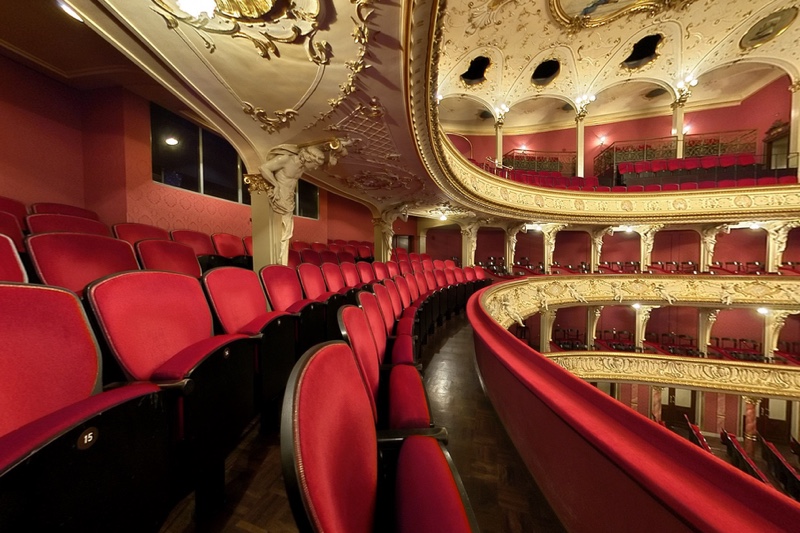
Opera Calling, Hidden Bugs in the Opera House broadcast live Opera Performances
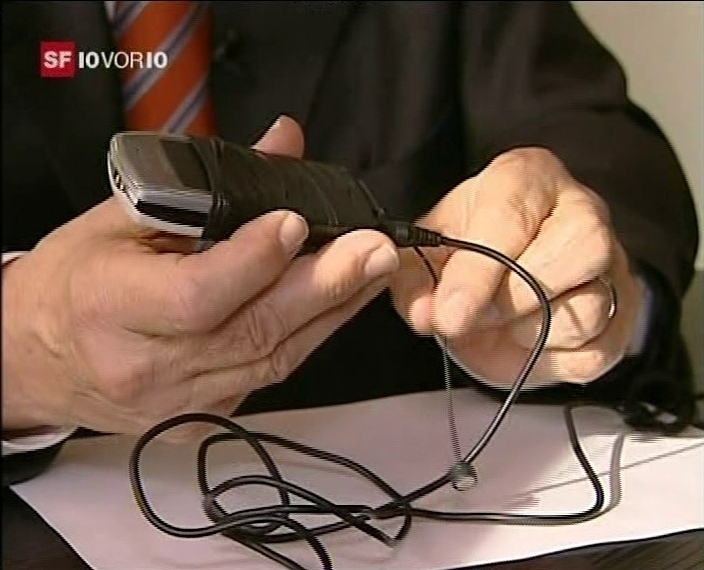
a href=”https://wwwwwwwwwwwwwwwwwwwwww.bitnik.org/o/”>Opera Calling, First bug found by Zurich Opera
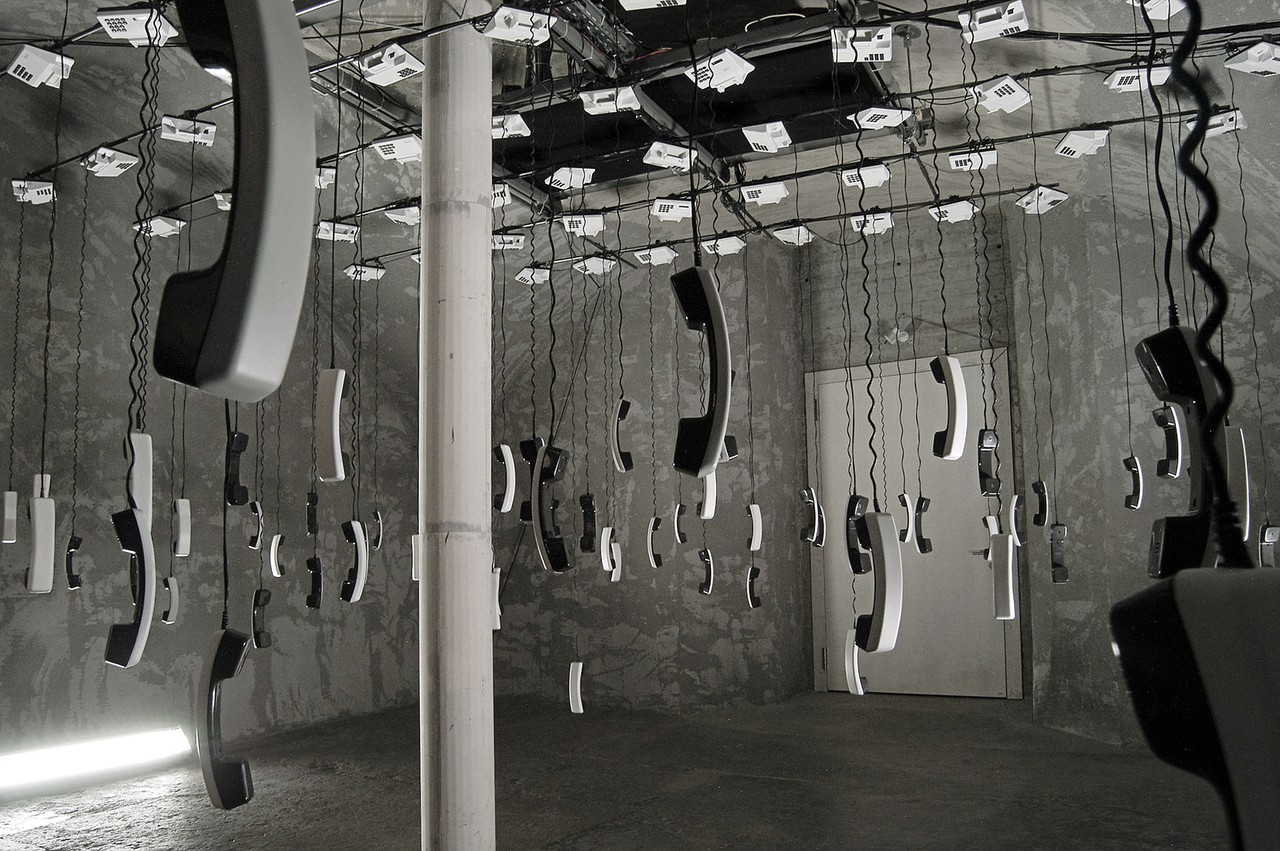
Installation of Telephone Machine at Cabaret Voltaire, Zürich
In 2007, the duo placed audiobugs in secret locations inside the auditorium of the Zurich Opera. During several weeks, the audio bugs transmitted live the performances to randomly selected phone land-lines in Zurich. As soon as the listener would hang up, the telephone machine automatically called another random number.
The opera is a very old art form. It is one that is often regarded as being a bit elitist too. The artists were looking for a way to open this closed system to more people without them having to go to the opera themselves.
The intervention is an echo of early forms of radio broadcasts. On January 13, 1910, the first public radio broadcast was an experimental transmission of a live Metropolitan Opera House performance. And even earlier than that, Europe had the Théâtrophone (“the theatre phone”), a telephonic distribution system that allowed subscribers to listen to opera and theatre performances over the telephone lines.
!Mediengruppe Bitnik wanted to bring back this very early form of radio but this time as a home-delivery service that no one had asked for.
In total over 90 hours of opera performances were retransmitted to 4363 households.
The Zurich Opera wasn’t too happy with the initiative and didn’t know how to deal with it. First, they accused the artists of copy right infringement and asked them to pay a broadcasting fee. Next, they wanted to sue for libel because the singers complained that the quality of the sound over the phone made them sound bad. The opera house even threatened to call the military if the opera house wasn’t debugged within 48 hours.
The opera house is an extremely well funded institution in the canton of Zurich where 85% of the art funding is dedicated to the opera house. Bitnik’s intervention might, at first sight, look like little more than a bit of artistic fun and wit but it led to some interesting local conversations:
There followed a debate in the media over cultural ownership and cultural subsidies. Eventually the Zurich Opera decided to tolerate «Opera Calling» as a temporary enhancement of their performance repertoire.
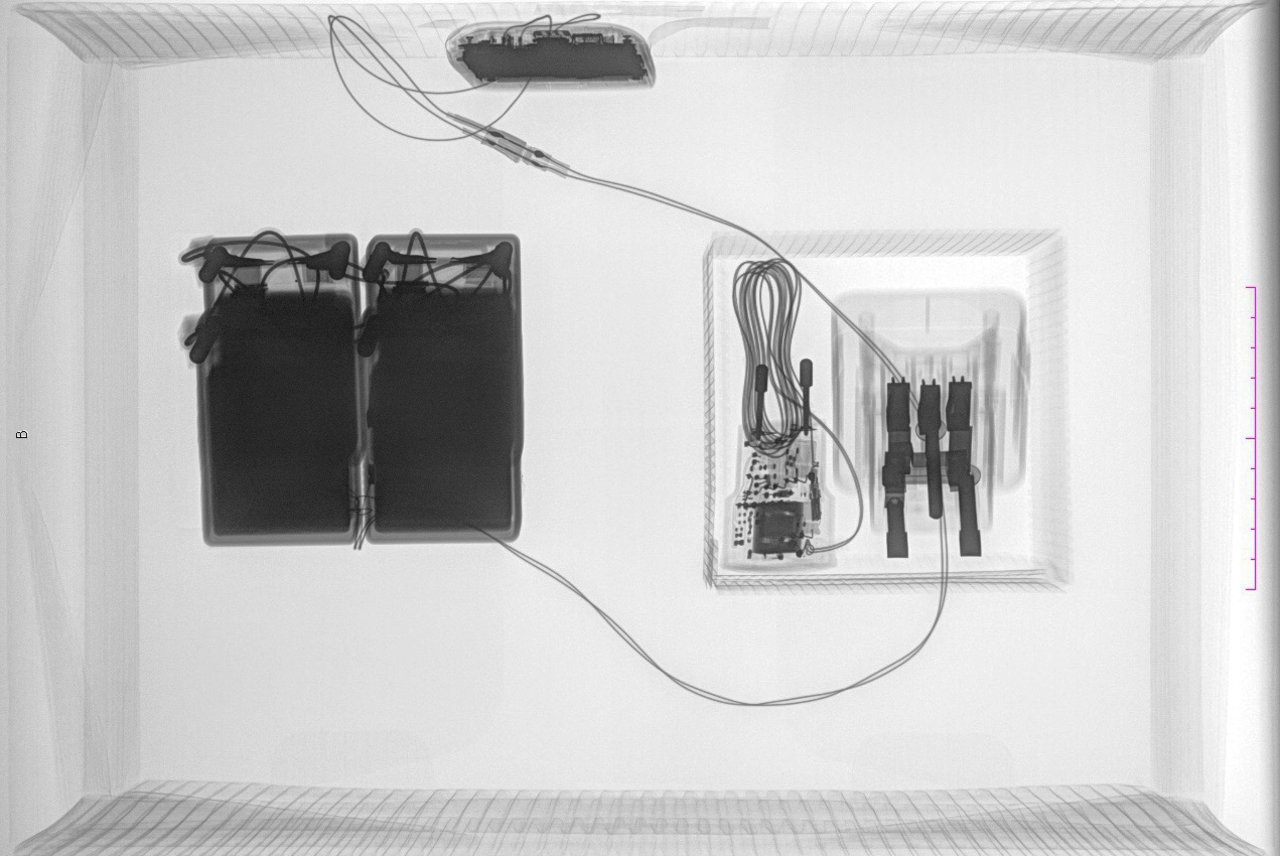
Scan image of the parcel
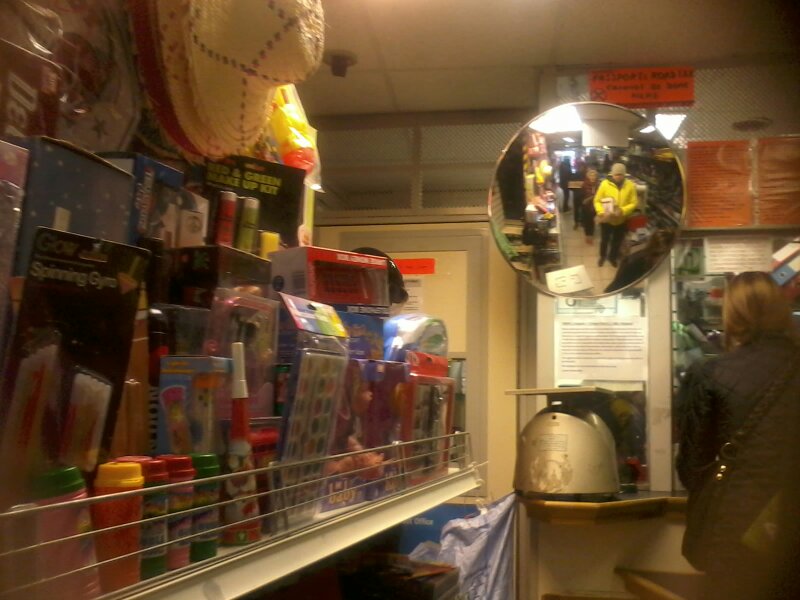
16.01.2013 12:38, At the post office. queuing up
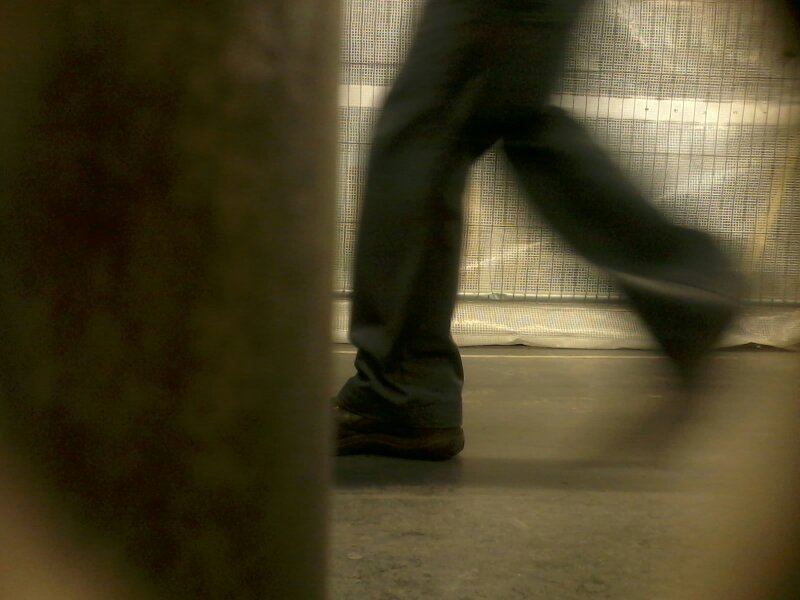
16.01.2013 20:45, Another person. Parcel is still at ‘Mount Pleasant’ Post Office.

17.01.2013 16:39, battery time: over 30hours – battery status: critical – hopefully 6 hours left
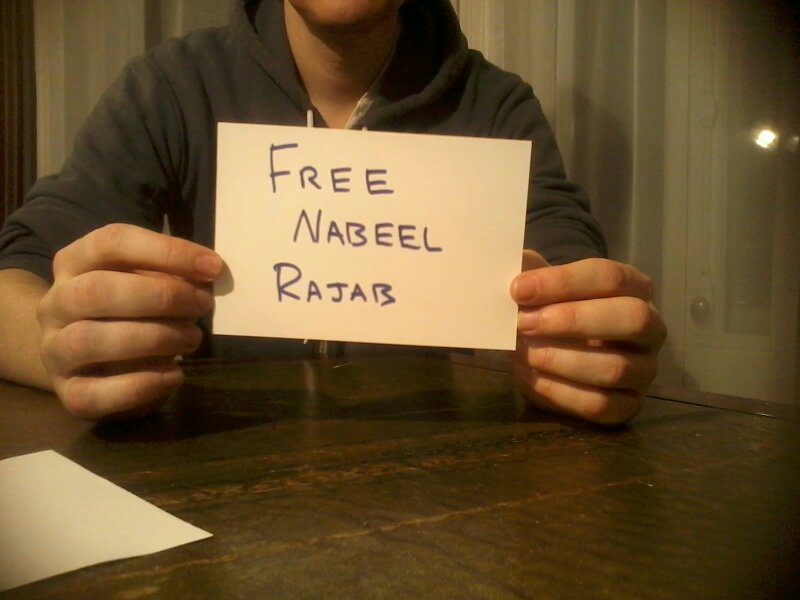
17.01.2013 18:44, Free Nabeel Rajab
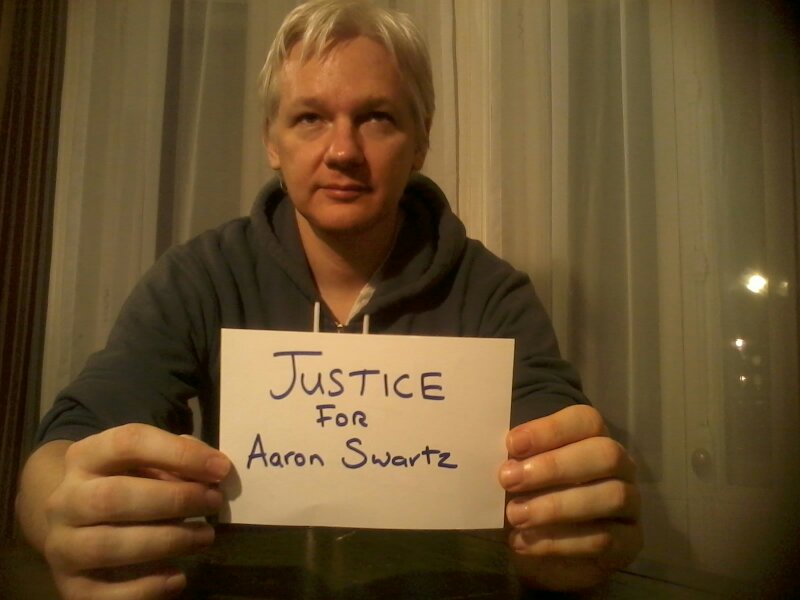
17.01.2013 18:56, Justice For Aaron Swartz
Bitnik also discussed their brilliant 32-hour ‘live mail art piece’ Delivery for Mr. Assange.
Julian Assange has been living at the Ecuadorian embassy in London since June 2012. Although he was granted political asylum by Ecuador to avoid extradition to Sweden, the WikiLeaks founder cannot leave the premises for fear of being arrested by UK authorities.
The Ecuadorian Embassy is thus at the core of a diplomatic crisis. Interestingly, the embassy is located in one of the most photographed and touristic areas of London: it’s in Knightsbridge, just behind Harrod’s. Yet, there is very little visual documentation showing the kind of ‘war zone’ in the immediate vicinity of the Embassy. The artists wondered how they could engage with this situation. They realized that the one thing that was going through this kind war zone on a daily basis was the postal system and they thought they’d use it to send a parcel to Assange and thus enter the embassy. Royal Mail was to be their Trojan Horse! However, they were unsure of the success of their idea:
Will the parcel be opened on the way? And by whom? Which route will it take? And of course, will it reach its recipient?
!Mediengruppe Bitnik posted the parcel addressed to Julian Assange at the Ecuadorian embassy on the 16th of January 2013. The box had a hole through which a camera was documenting its journey through the postal system at the rate of one photo every 15 seconds. The images captured were transferred to Bitnik website and their Twitter account. Anyone could follow the parcel status online in real time. Over the 32 hours it took for the package to go from postal office to warehouses, to vans, to parcels to Assange, the Twitter feed detailing its every moves attracted thousands of followers.
The duo commented that they liked this moment when they lost all control over their piece. There was however a stressful detail: the battery life. The artists had no idea how long the parcel would take to reach its destination but fingers crossed, the battery would last long enough.
The parcel eventually made it to the Embassy. But it stayed unopened on a table for a few hours. People there were aware of its origin and history but were not sure how to deal with it.
The experiment ended up well, with Assange using little messages on cardboard to thank Ecuador and to express on camera his support to other people imprisoned because they had acted in defence of transparency and freedom of speech.
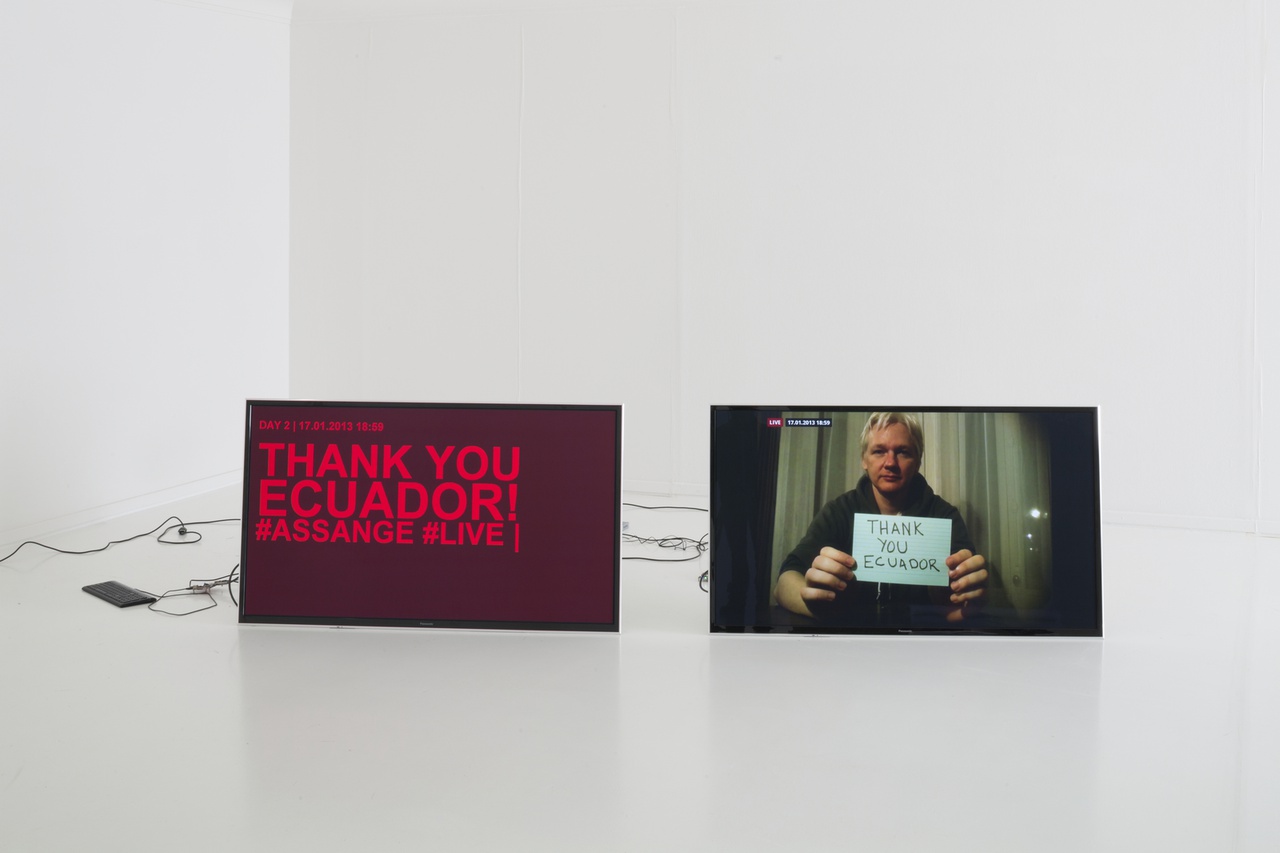
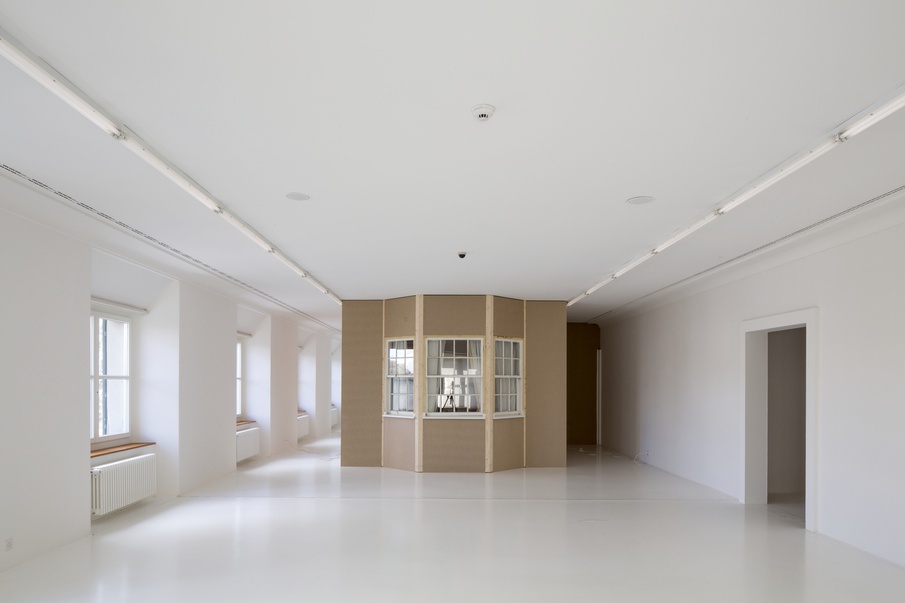
Exhibition view «Delivery for Mr. Assange» at Helmhaus Zurich. Photo: Mancia/Bodmer, FBMstudio. Exhibition: Feb 14 – Apr 06 2014, Helmhaus Zurich
Bitnik later exhibited the work in a Zurich gallery. Faced with the challenge of transforming an online performance into a white wall show, they decided to rebuild the Assange’s work space at the embassy. It’s fairly small. 20 square meter with heavy and fairly impractical embassy furniture and also many books and objects related to hacker culture. Which makes for an interesting mix.
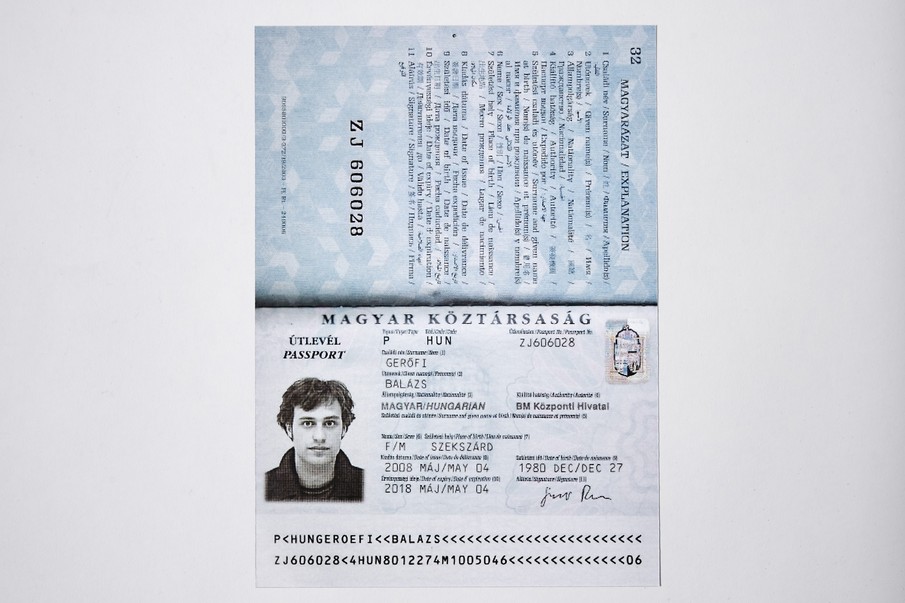
Hungarian High Quality Passport Scan. Ordered by Random Darknet Shopper (10 Dec 14) for 0.07124536 Bitcoins. The Hungarian Passport scan arrived as digital image. A scan (photography) of a passport in low quality
From the description: «All passport is real, valid, colored, scanned passports for online verification…»

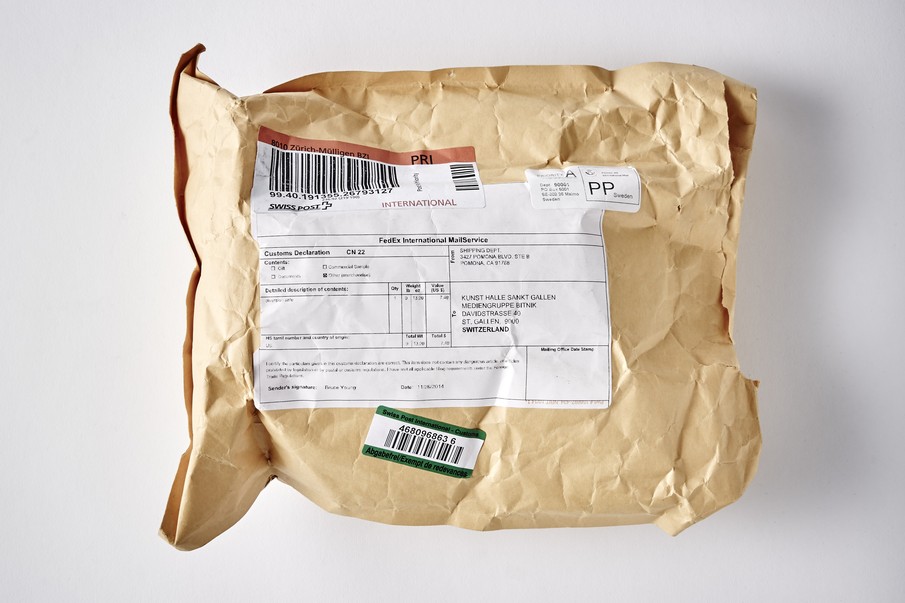
Sprite Stash Can. Ordered by Random Darknet Shopper (26 Nov 14) for 0.05930238 Bitcoins

NIKE Air Yeezy 2. Ordered by Random Darknet Shopper (5 Nov 14) for 0.22061418 Bitcoins
Next, Bitnik talked about their most famous live Mail Art piece: The Random Darknet Shopper, an online bot with a budget of $100 in Bitcoins per week. Each time, the work is exhibited, the bot uses its budget to randomly purchase one item in the deep web. Next, the order is mailed directly to the exhibition space where it is unpacked, displayed and part of a landscape of traded goods from the Darknet.
Once again, Bitnik enjoyed losing control over the performance. The Random Darknet Shopper is a piece of automated work that comes with its own questions about anonymity, trust and responsibility. Who is answerable for what the bot is buying? Is it the gallery that receives the goods? The artists who programmed the bot? Or is it just the bot? The financial system now relies on algorithms to do the trading and in that case, the question of the responsibility becomes an even more tangible one.
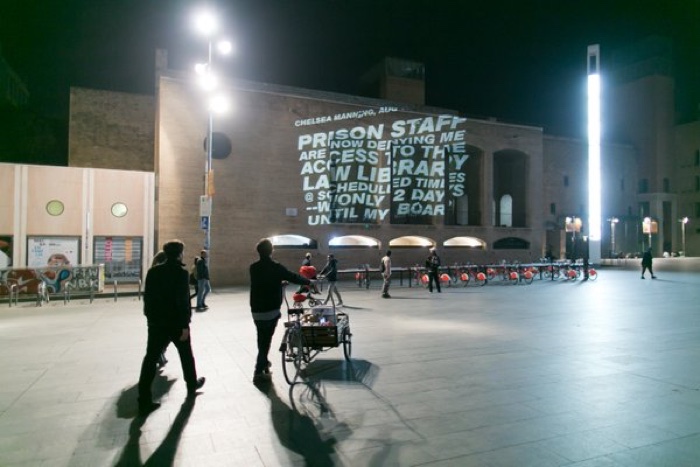
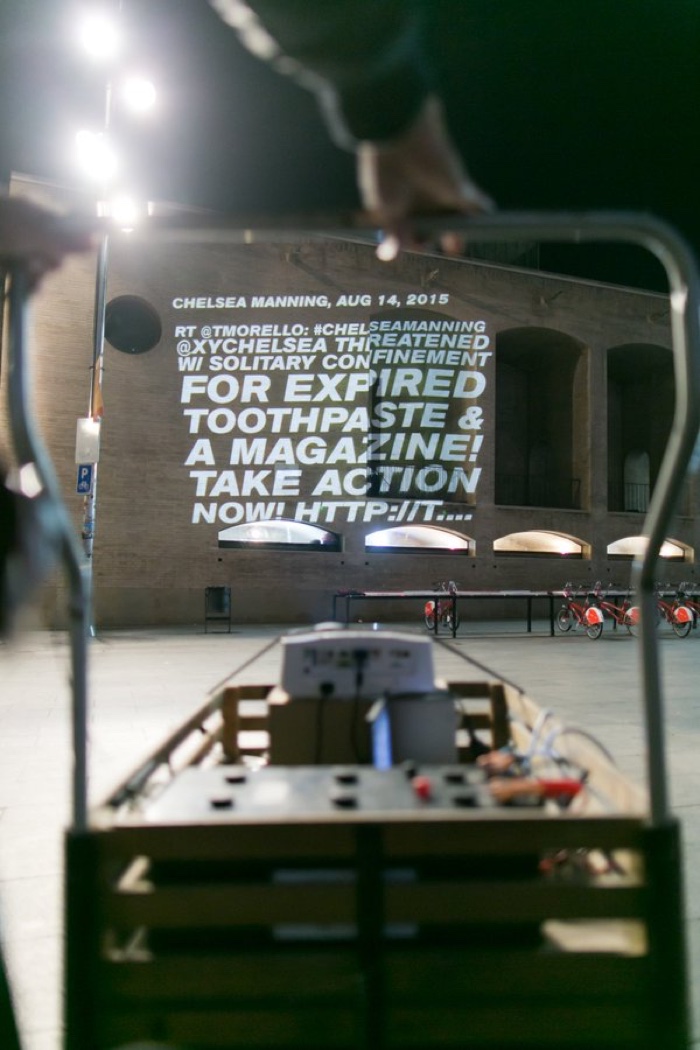
!Mediengruppe Bitnik, Chelsea’s Wall
On the opening night of The Influencers festival, Bitnik also premiered their work Chelsea’s Wall in which they toured the streets of Barcelona to project onto the walls of the city the tweets that Chelsea Manning is dictating over the phone from prison.
!Mediengruppe Bitnik didn’t talk about H3333333K but since it’s one of my favourite works from them, i’m going to add a couple of photos of that one. The work translates a glitch onto the façade of the House of Electronic Arts Basel:
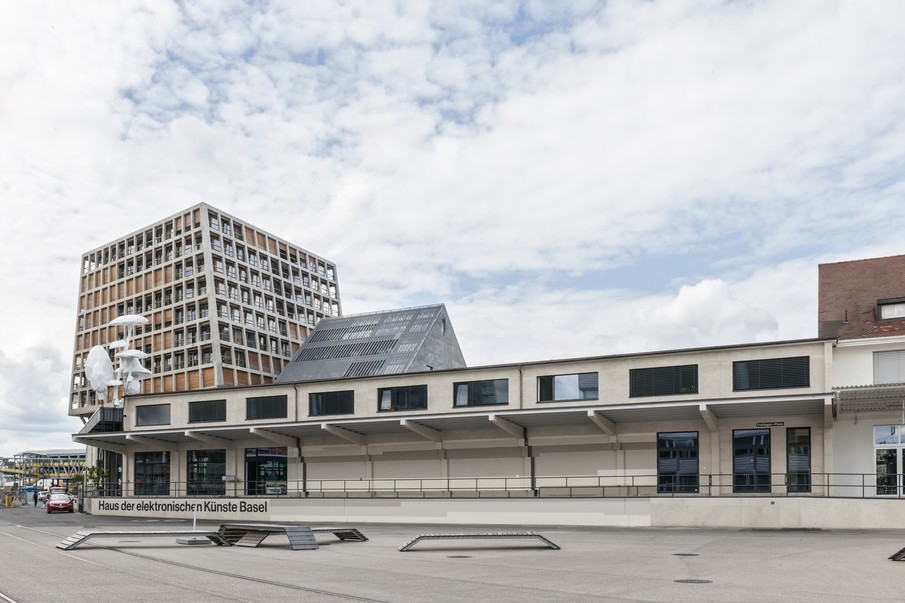
H3333333K at House of Electronic Arts in Basel
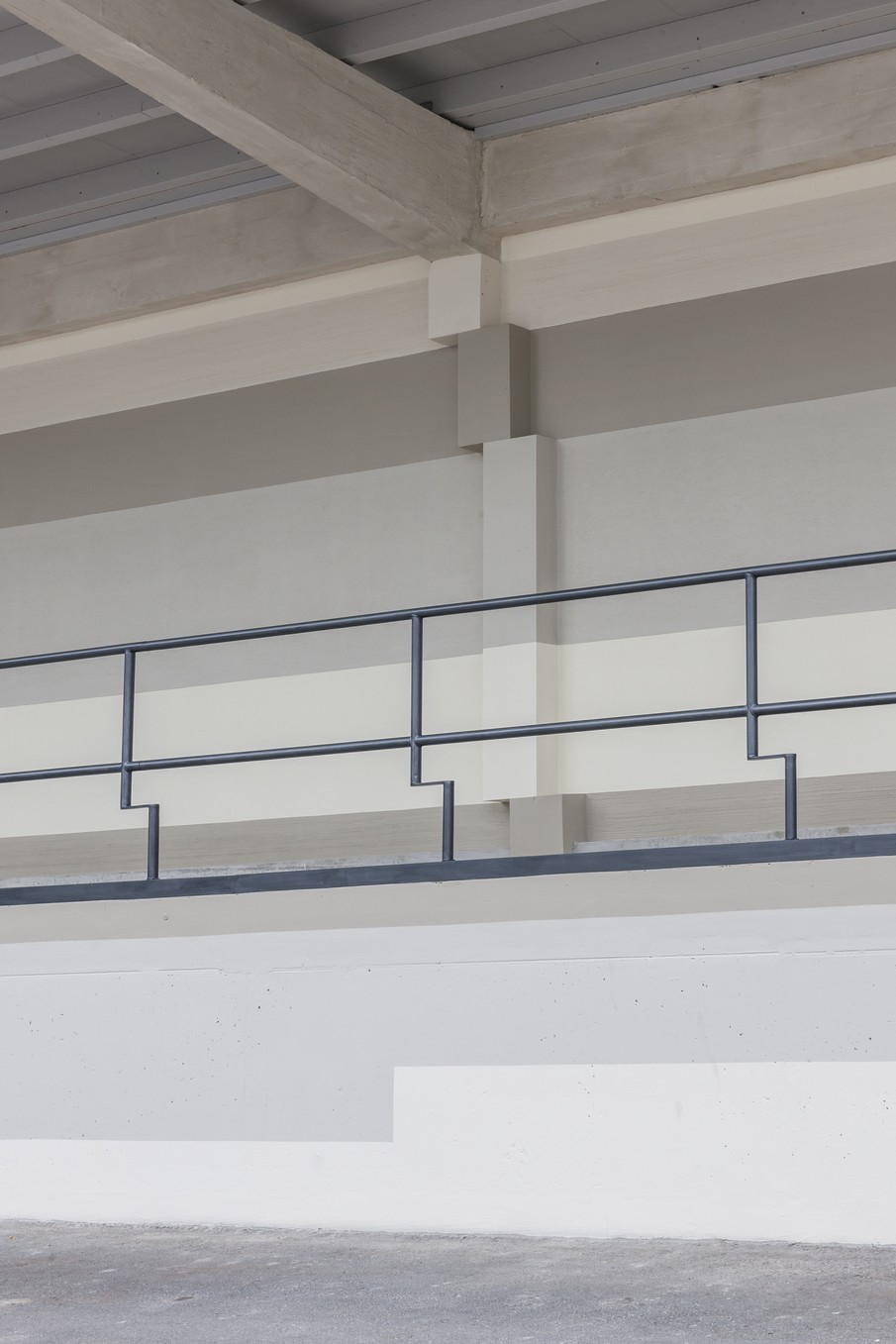
H3333333K at House of Electronic Arts in Basel
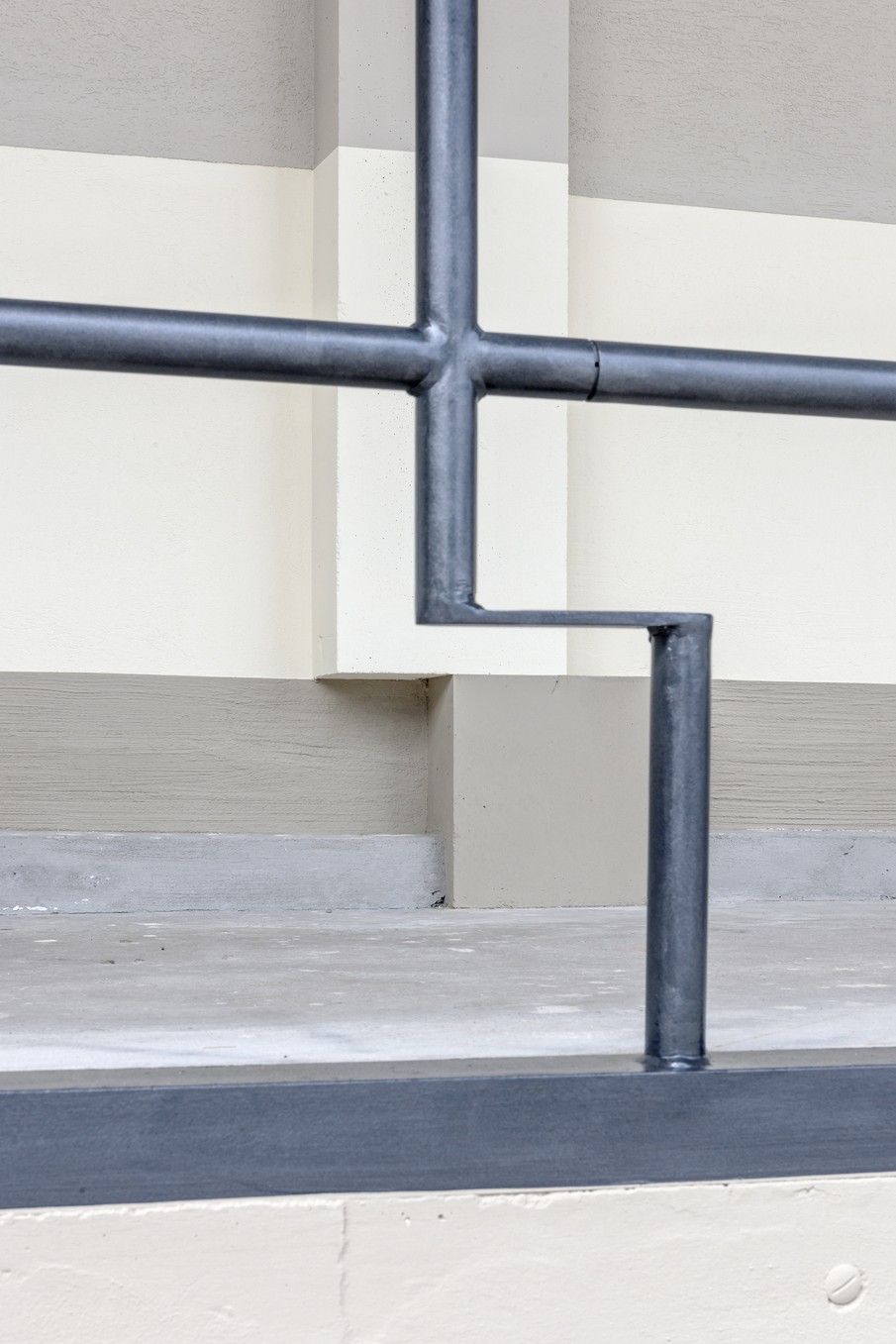
H3333333K at House of Electronic Arts in Basel
Previously: The Influencers: Former MI5 spy Annie Machon on why we live in a dystopia that even Orwell couldn’t have envisioned.

